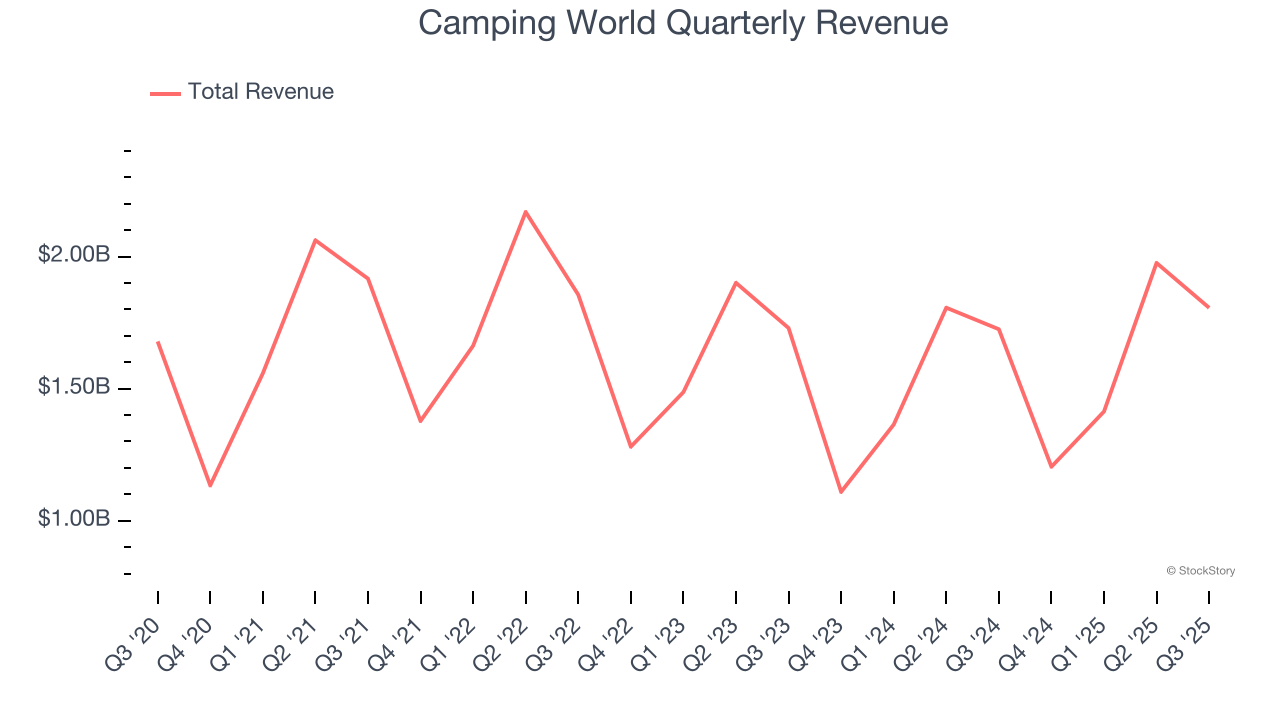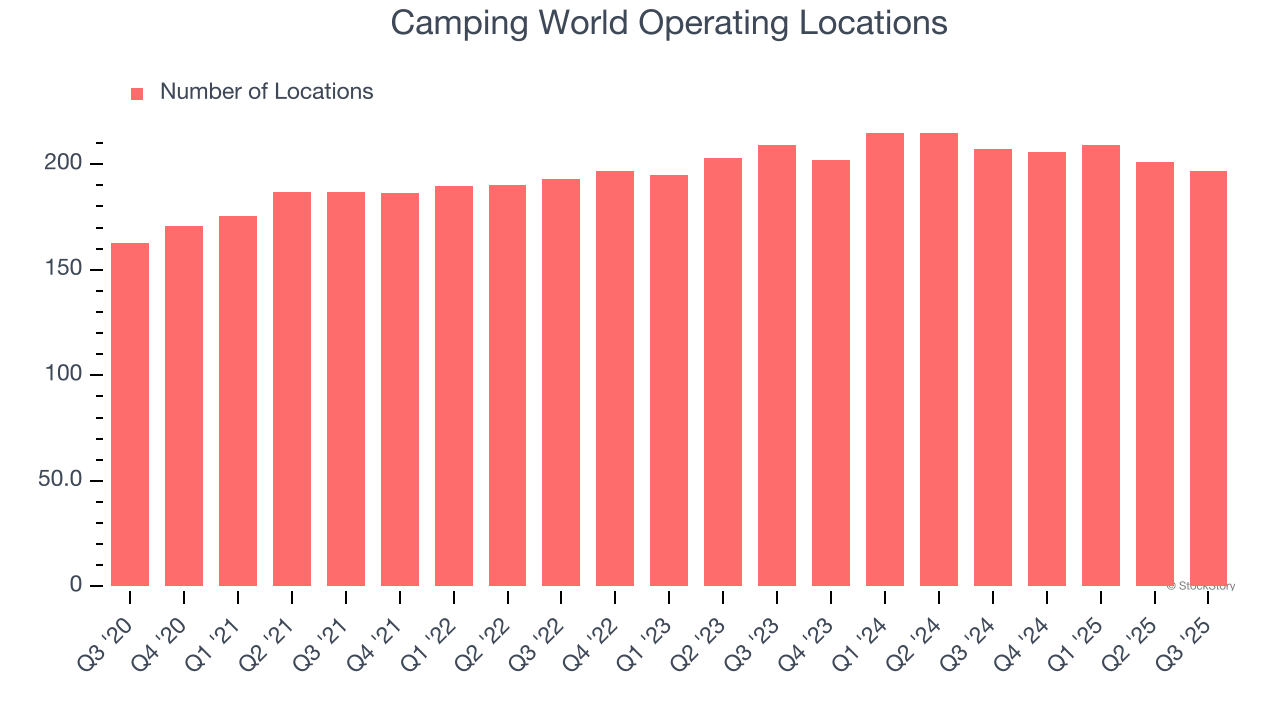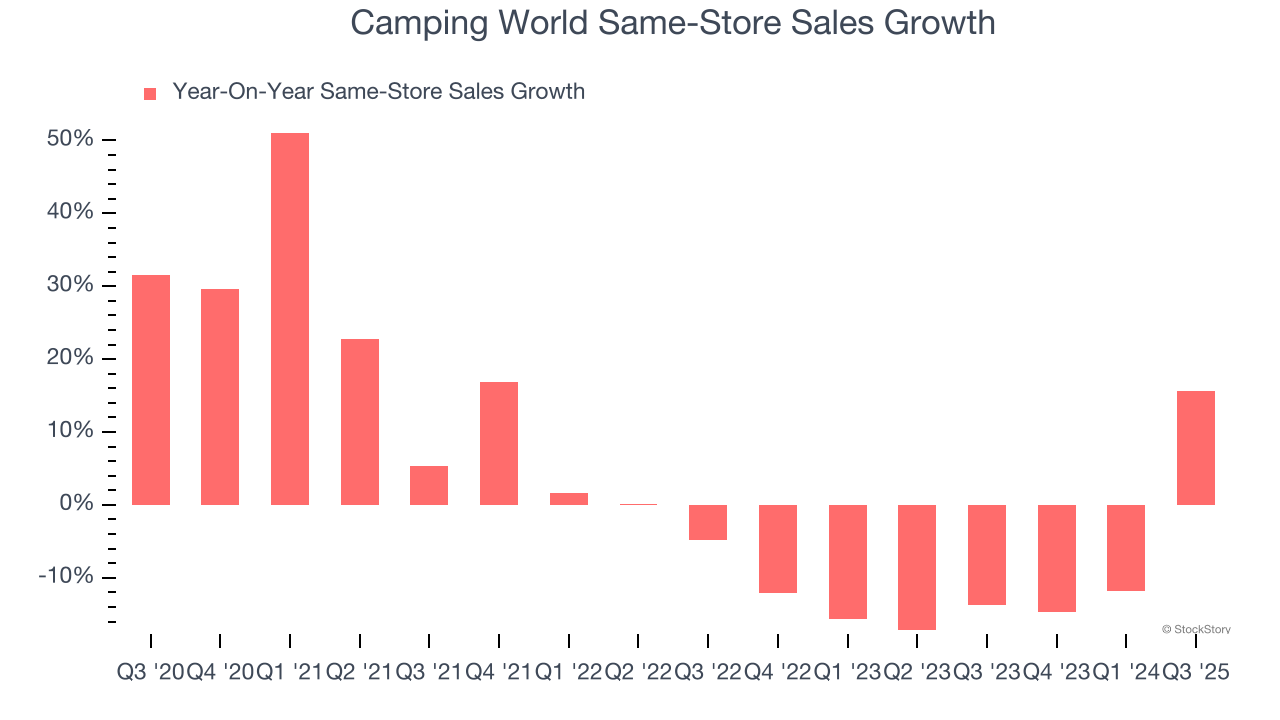
Recreational vehicle (RV) and boat retailer Camping World (NYSE:CWH) reported Q3 CY2025 results beating Wall Street’s revenue expectations, with sales up 4.7% year on year to $1.81 billion. Its non-GAAP profit of $0.43 per share was 41% above analysts’ consensus estimates.
Is now the time to buy Camping World? Find out by accessing our full research report, it’s free for active Edge members.
Camping World (CWH) Q3 CY2025 Highlights:
- Revenue: $1.81 billion vs analyst estimates of $1.74 billion (4.7% year-on-year growth, 3.9% beat)
- Adjusted EPS: $0.43 vs analyst estimates of $0.31 (41% beat)
- Adjusted EBITDA: $95.71 million vs analyst estimates of $93 million (5.3% margin, 2.9% beat)
- Operating Margin: 4.4%, in line with the same quarter last year
- Free Cash Flow Margin: 5.8%, down from 17.7% in the same quarter last year
- Locations: 197 at quarter end, down from 207 in the same quarter last year
- Same-Store Sales were up 15.6% year on year
- Market Capitalization: $1.05 billion
Company Overview
Founded in 1966 as a single recreational vehicle (RV) dealership, Camping World (NYSE:CWH) still sells RVs along with boats and general merchandise for outdoor activities.
Revenue Growth
Examining a company’s long-term performance can provide clues about its quality. Any business can have short-term success, but a top-tier one grows for years.
With $6.4 billion in revenue over the past 12 months, Camping World is a mid-sized retailer, which sometimes brings disadvantages compared to larger competitors benefiting from better economies of scale.
As you can see below, Camping World’s sales grew at a sluggish 4.5% compounded annual growth rate over the last six years (we compare to 2019 to normalize for COVID-19 impacts) as it didn’t open many new stores.

This quarter, Camping World reported modest year-on-year revenue growth of 4.7% but beat Wall Street’s estimates by 3.9%.
Looking ahead, sell-side analysts expect revenue to grow 3.2% over the next 12 months, similar to its six-year rate. Despite the slowdown, this projection is above the sector average and implies the market sees some success for its newer products.
Software is eating the world and there is virtually no industry left that has been untouched by it. That drives increasing demand for tools helping software developers do their jobs, whether it be monitoring critical cloud infrastructure, integrating audio and video functionality, or ensuring smooth content streaming. Click here to access a free report on our 3 favorite stocks to play this generational megatrend.
Store Performance
Number of Stores
The number of stores a retailer operates is a critical driver of how quickly company-level sales can grow.
Camping World listed 197 locations in the latest quarter and has kept its store count flat over the last two years while other consumer retail businesses have opted for growth.
When a retailer keeps its store footprint steady, it usually means demand is stable and it’s focusing on operational efficiency to increase profitability.

Same-Store Sales
A company's store base only paints one part of the picture. When demand is high, it makes sense to open more. But when demand is low, it’s prudent to close some locations and use the money in other ways. Same-store sales is an industry measure of whether revenue is growing at those existing stores and is driven by customer visits (often called traffic) and the average spending per customer (ticket).
Camping World’s demand has been shrinking over the last two years as its same-store sales have averaged 3.6% annual declines. This performance isn’t ideal, and we’d be concerned if Camping World starts opening new stores to artificially boost revenue growth.

In the latest quarter, Camping World’s same-store sales rose 15.6% year on year. This growth was a well-appreciated turnaround from its historical levels, showing the business is regaining momentum.
Key Takeaways from Camping World’s Q3 Results
It was good to see Camping World beat analysts’ EPS expectations this quarter. We were also glad its revenue outperformed Wall Street’s estimates. On the other hand, its gross margin missed. Zooming out, we think this was a solid print. Investors were likely hoping for more, and shares traded down 4% to $16.15 immediately following the results.
So should you invest in Camping World right now? What happened in the latest quarter matters, but not as much as longer-term business quality and valuation, when deciding whether to invest in this stock. We cover that in our actionable full research report which you can read here, it’s free for active Edge members.
